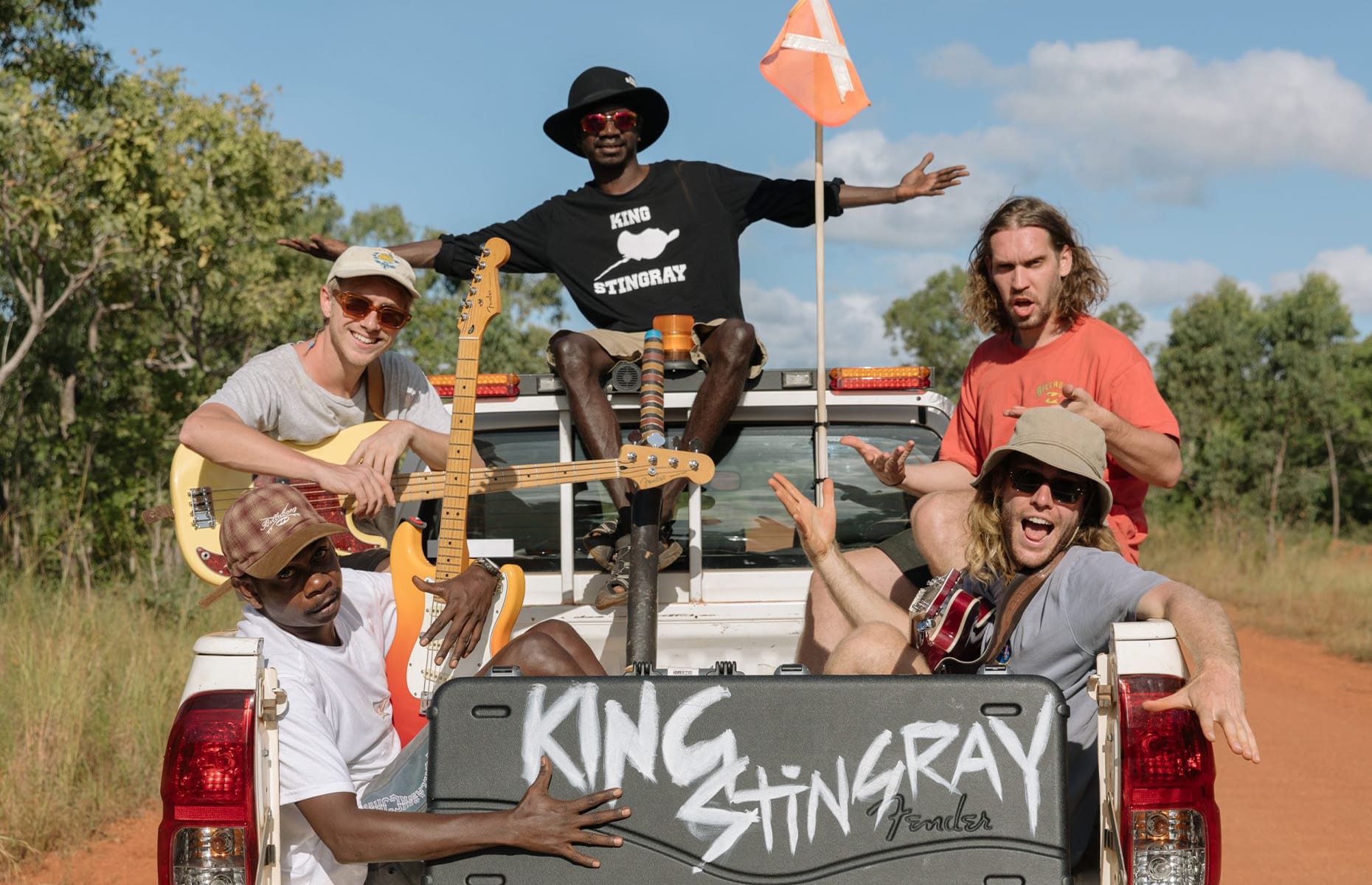By the time King Stingray hit the stage, almost two hours of muscle-pumping performances by support acts Dulcie and Jess Day had whipped the dance floor into a sweaty tangle of bodies. The damp La Niña air and raw anticipation of the heaving crowd created a gig-sized facsimile of the sort of build-up that the Northern Territory experiences before Wet Season. The raucous energy of King Stingray’s Yolŋu Surf Rock is all it would’ve taken to transport Manning Bar to the dusty red highways of their Top End home.
I have been following the band for a while now. The now six-man outfit — half Yolŋu, half balanda (non-Indigenous) — first piqued my attention during a Triple J highlight during a road trip through Far North Queensland last year. Since then, I have seen them perform twice before massive audiences, supporting Midnight Oil on their Resist tour. The energy brought by King Stingray to these performances was clearly something special, even on the giant stage of Qudos Bank Arena in Sydney. However, in the more intimate atmosphere of Manning Bar, the band truly came into their own.
Before a massive crowd at Qudos, the obvious charisma of lead vocalist Yirrŋa Yunupiŋu was predictably diluted — whether a consequence of nerves or simply the greater difficulty of connecting with such a huge body of people, it’s not for me to say. However, his clear command over the smaller crowd at Manning — along with the powerful synergy fostered by every other member of the band — was frankly spectacular.
King Stingray is a group with a vigorous, intense, and joyous stage presence. Every member of the band brought unique flair, creating an exhilarating chemistry between each other and the audience. Yolŋu guitarist Dimathaya Burarrwanga’s physical performance was ecstatic, and his playful physical communication with the other members is particularly memorable. All in all, King Stingray is clearly more than a group of incredibly talented musicians — they appear, first and foremost, as a tight-knit group of friends having fun together: the defining characteristic of almost every truly spectacular live act.
Another standout was guitarist Roy Kellaway, who manipulated the audience through an encore jam-sesh that turned into a rousing call-and-response with the audience. Amazingly, the band enraptured the audience with Yolŋu Matha words that many simply didn’t understand.
This cross-cultural interpolation is another one of their defining features. Another is their similarities with famous ‘80s rockers Yothu Yindi, of whom two members of King Stingray can claim a direct family connection. However, this may be a lazy appraisal that does not fully recognise the singularity of this group. When Yirrŋa Yunupiŋu talks of all peoples, black and white, coming together to make Australia a truly special place, he invokes a conviction that permeates through the entire band and their music.This message, when paired with their unique ability to connect to the audience, holds a powerful and much-needed place in an Australia still struggling to come to terms with its dark history of brutal Indigenous subjugation and dispossession.
Ultimately, I think the words of my companion to the gig really sum up the entire experience. After catching her crying during King Stingray’s cover of Coldplay’s Yellow — which the band got the entire audience to sing — I asked her what she thought of the concert.
“It is incredible that we can be in this moment of time and place to experience this… I truly just feel so lucky to be alive”, she said.
In the end, I think such a statement perfectly encapsulates my feelings after such a performance. Through the music of King Stingray we danced, we laughed, we cried; we were transported away from the claustrophobia of inner-city Sydney to the endless empty highways, tangled stringybark, and savannah grass of outback Australia’s tropical north.





